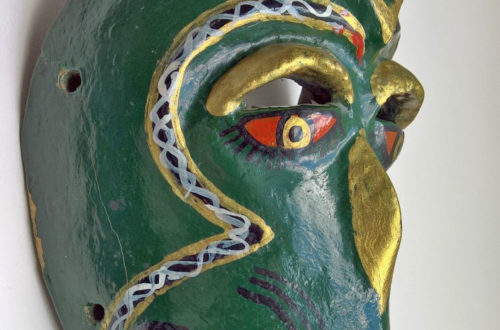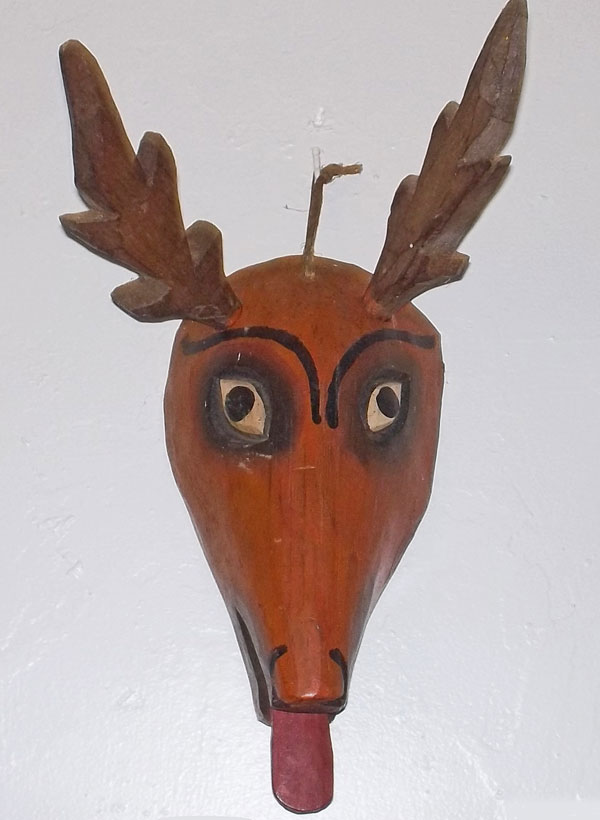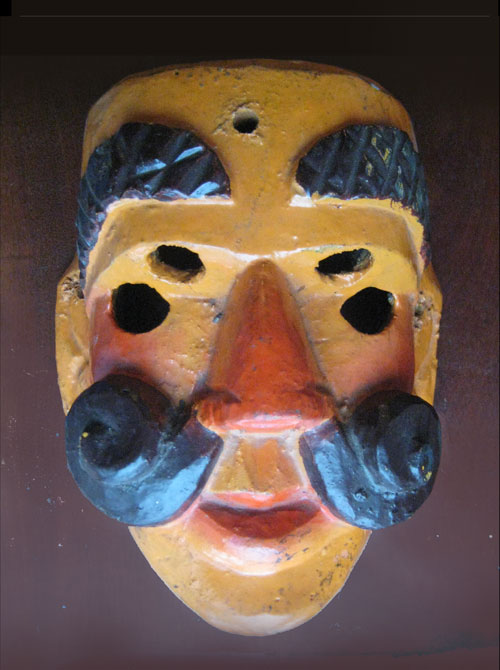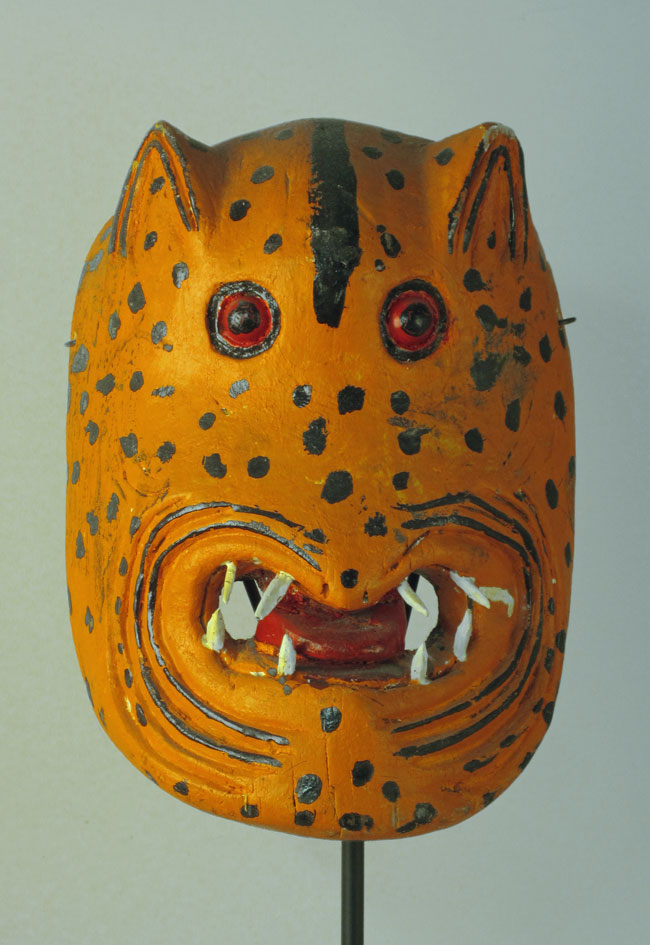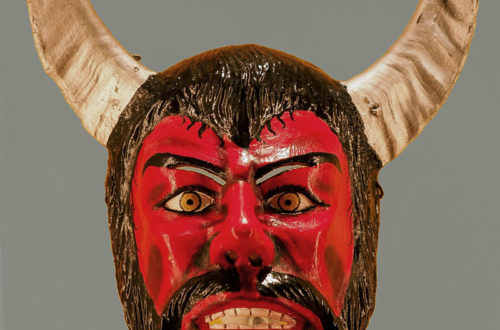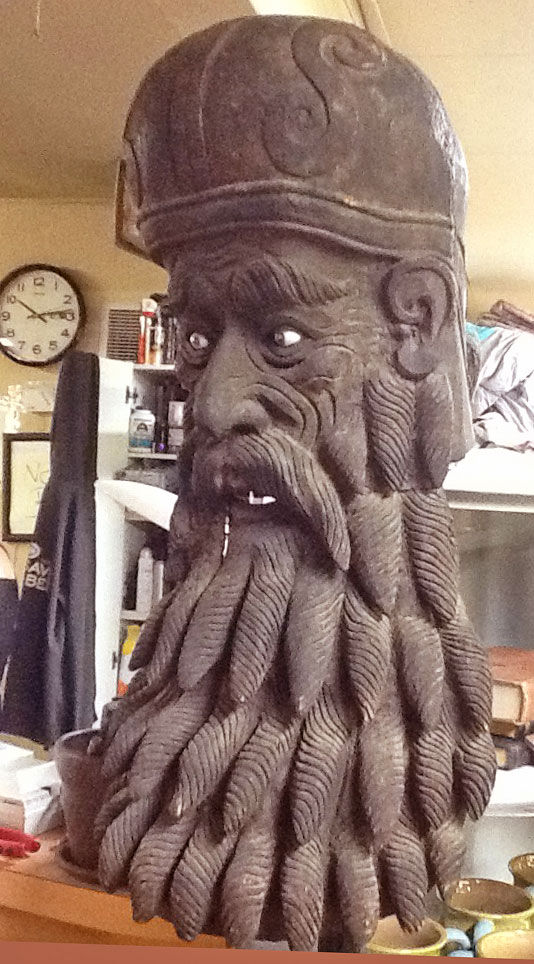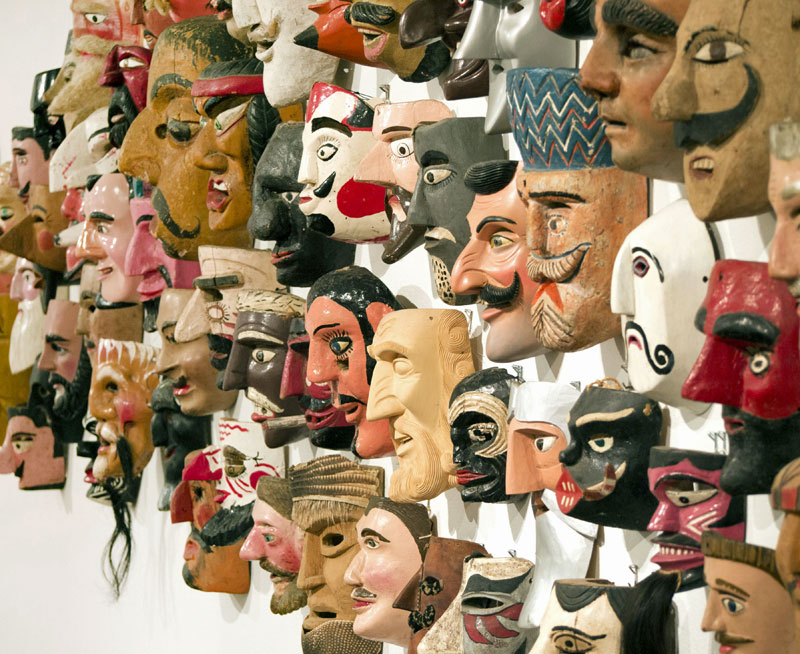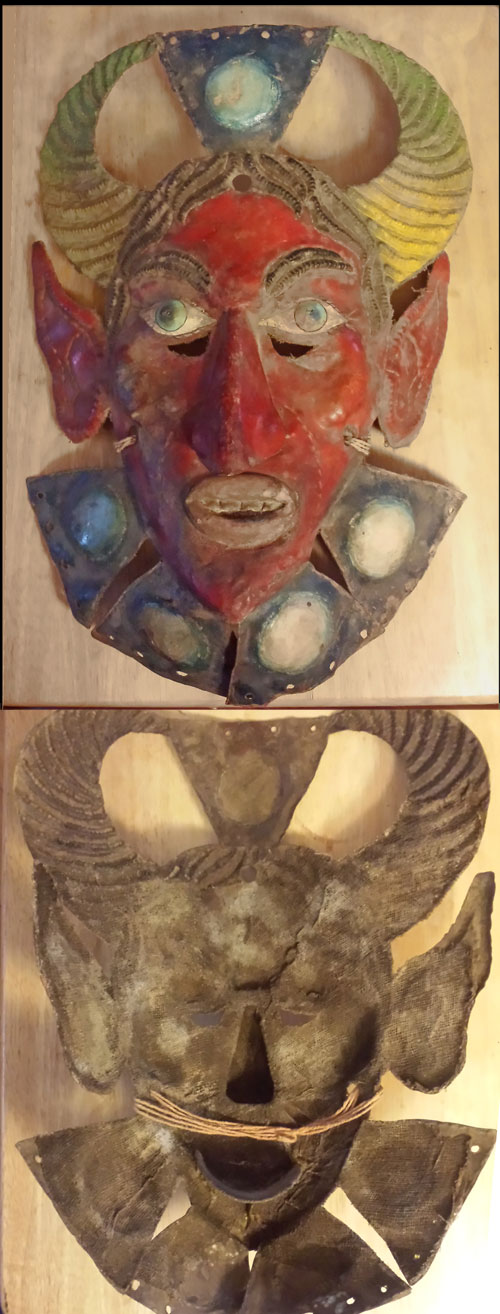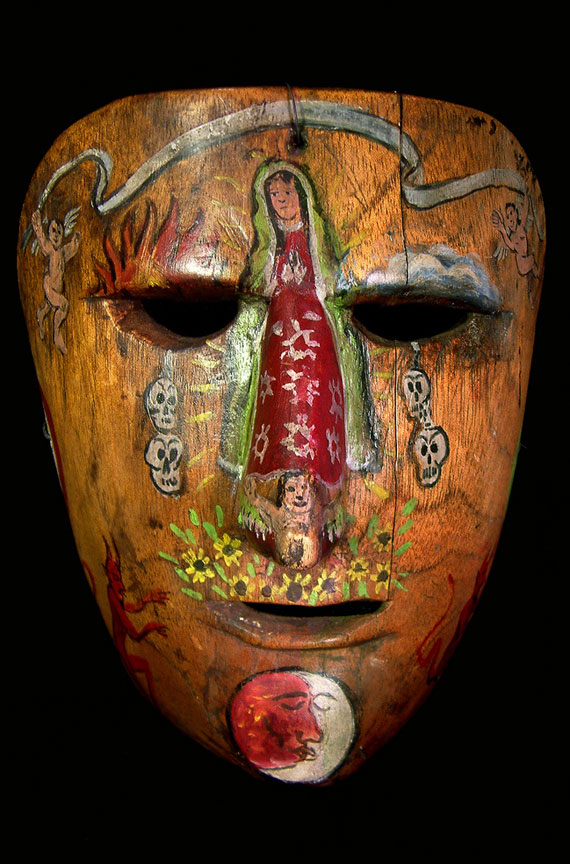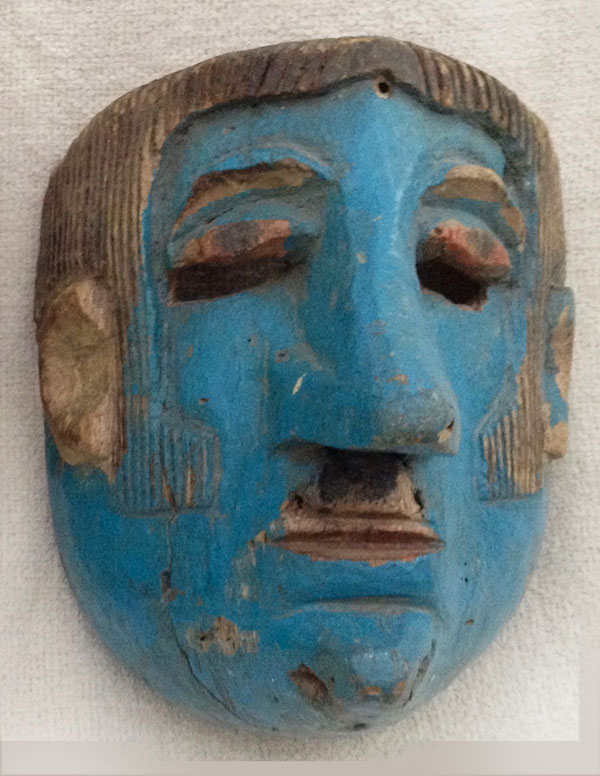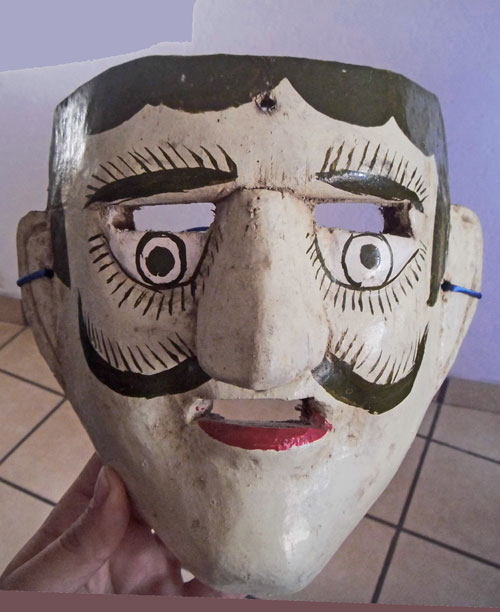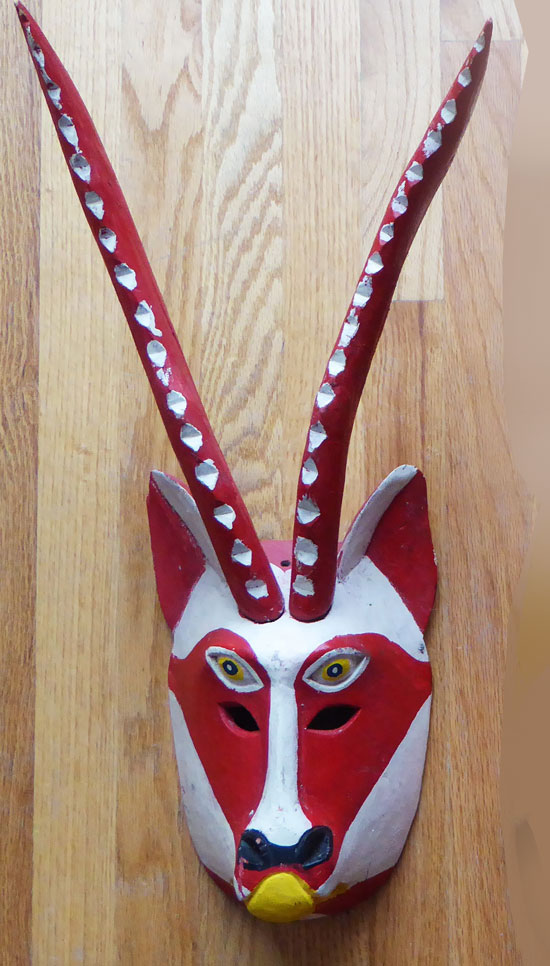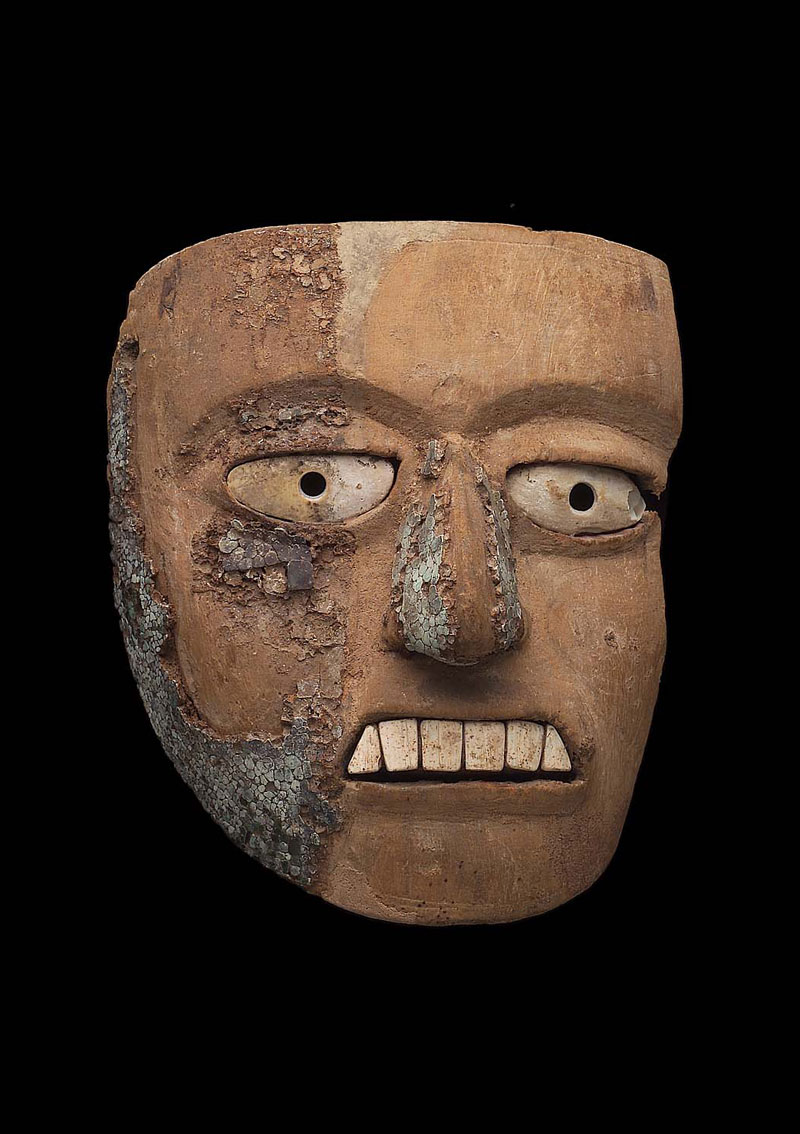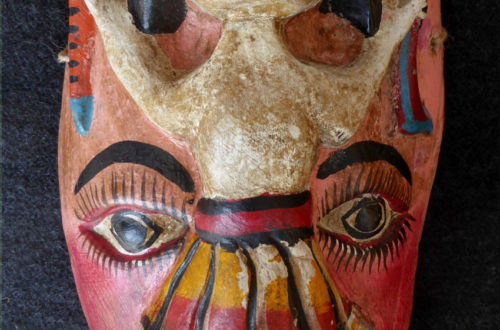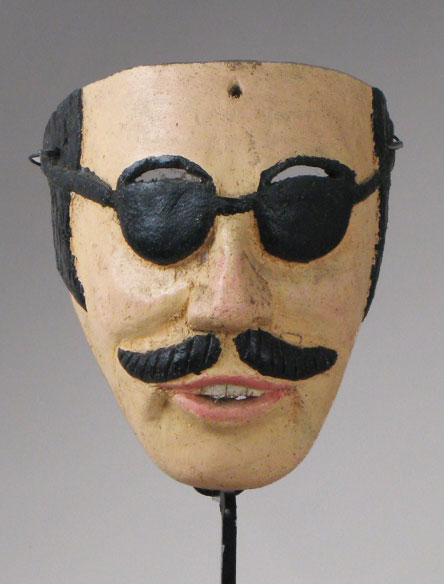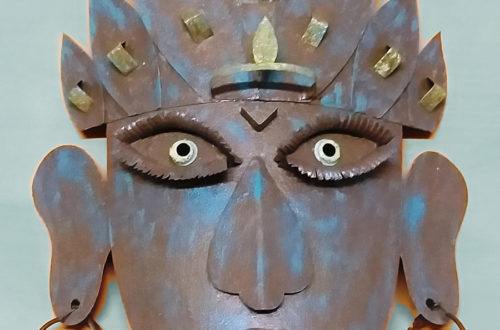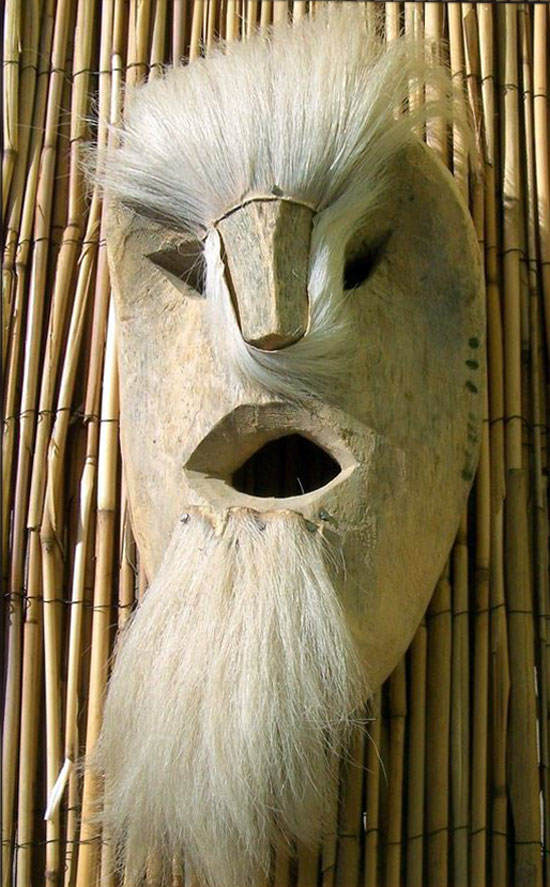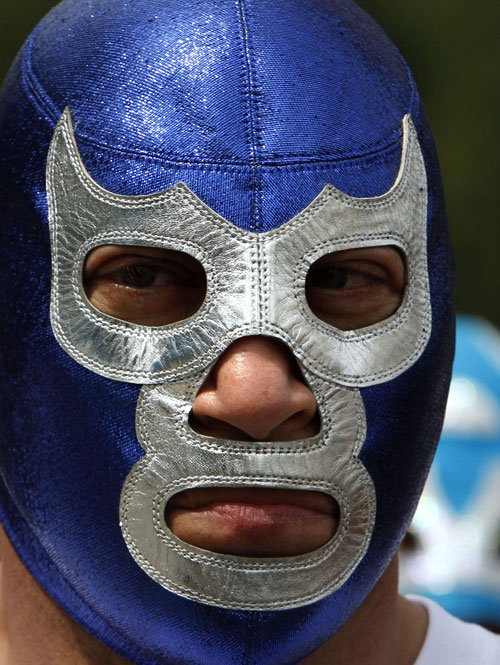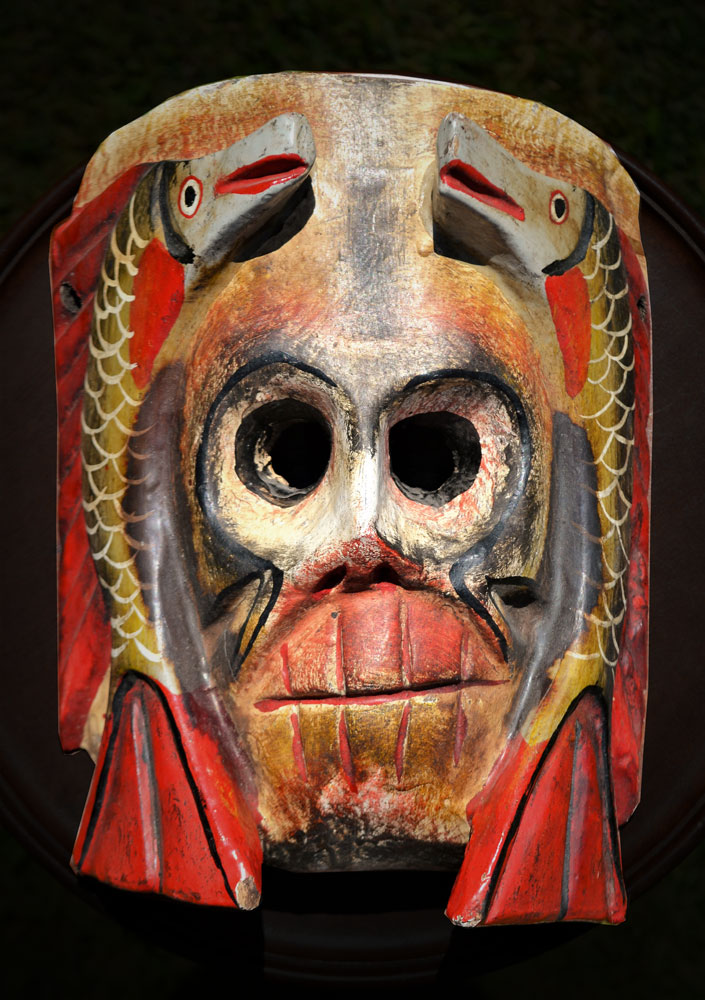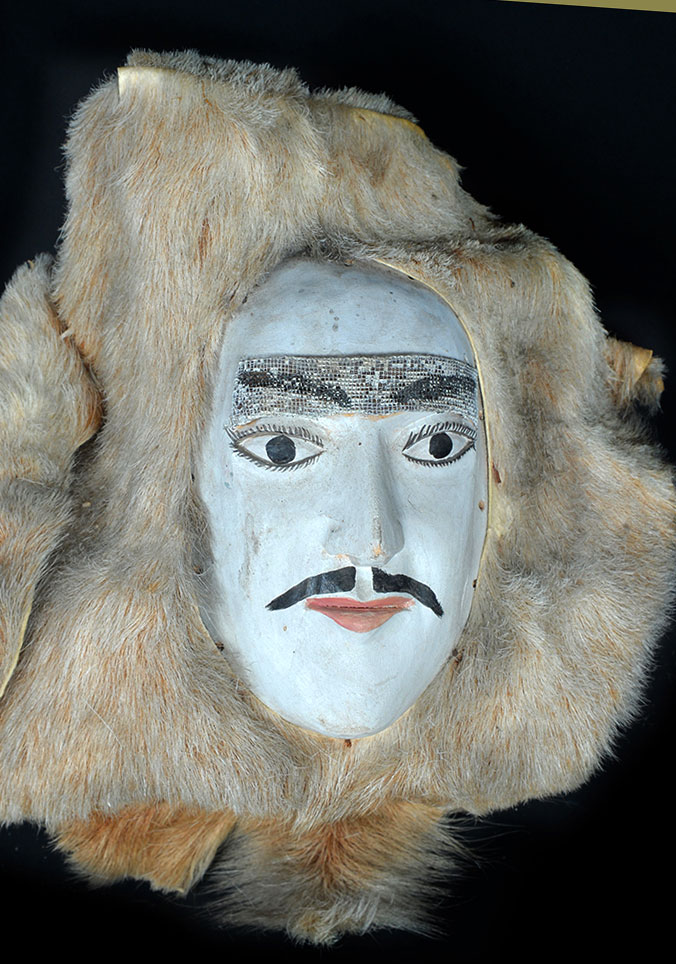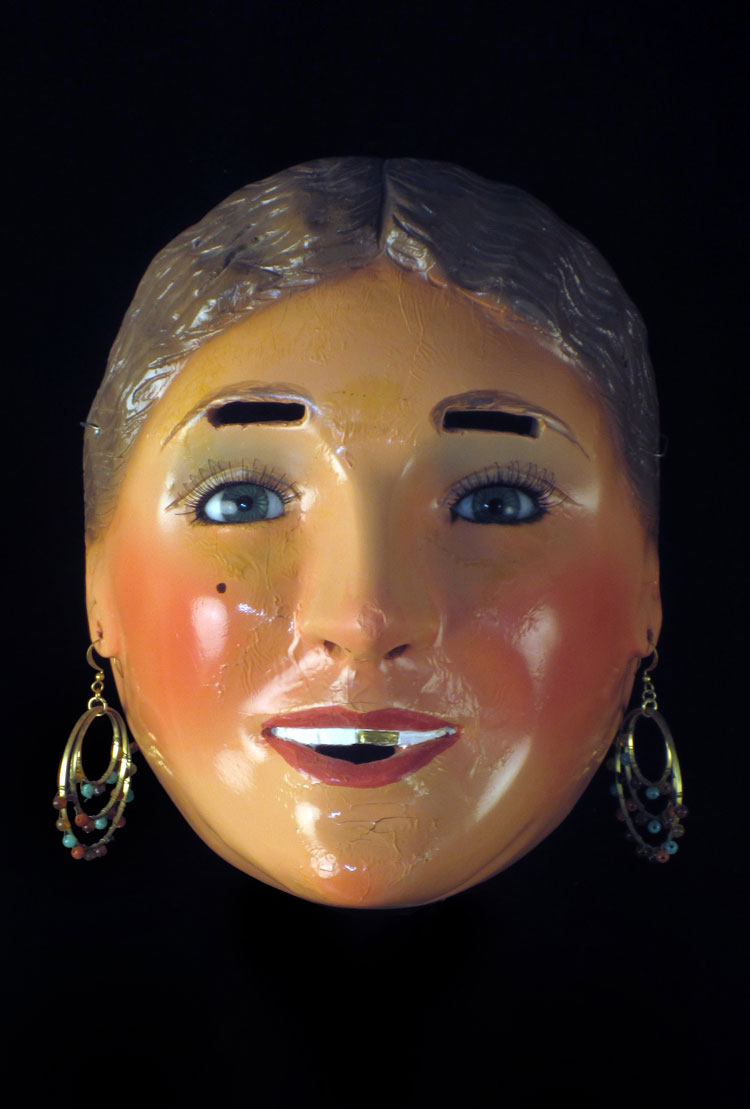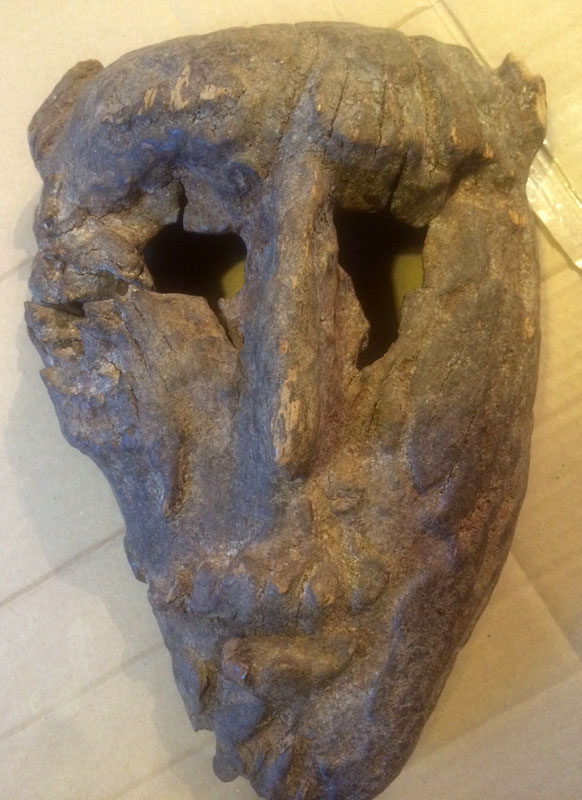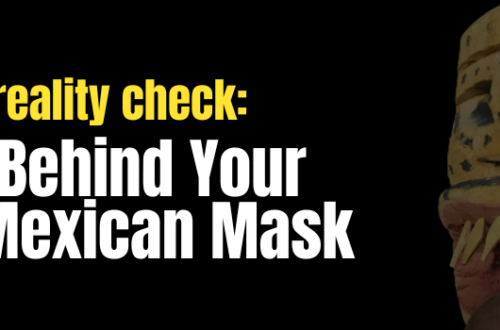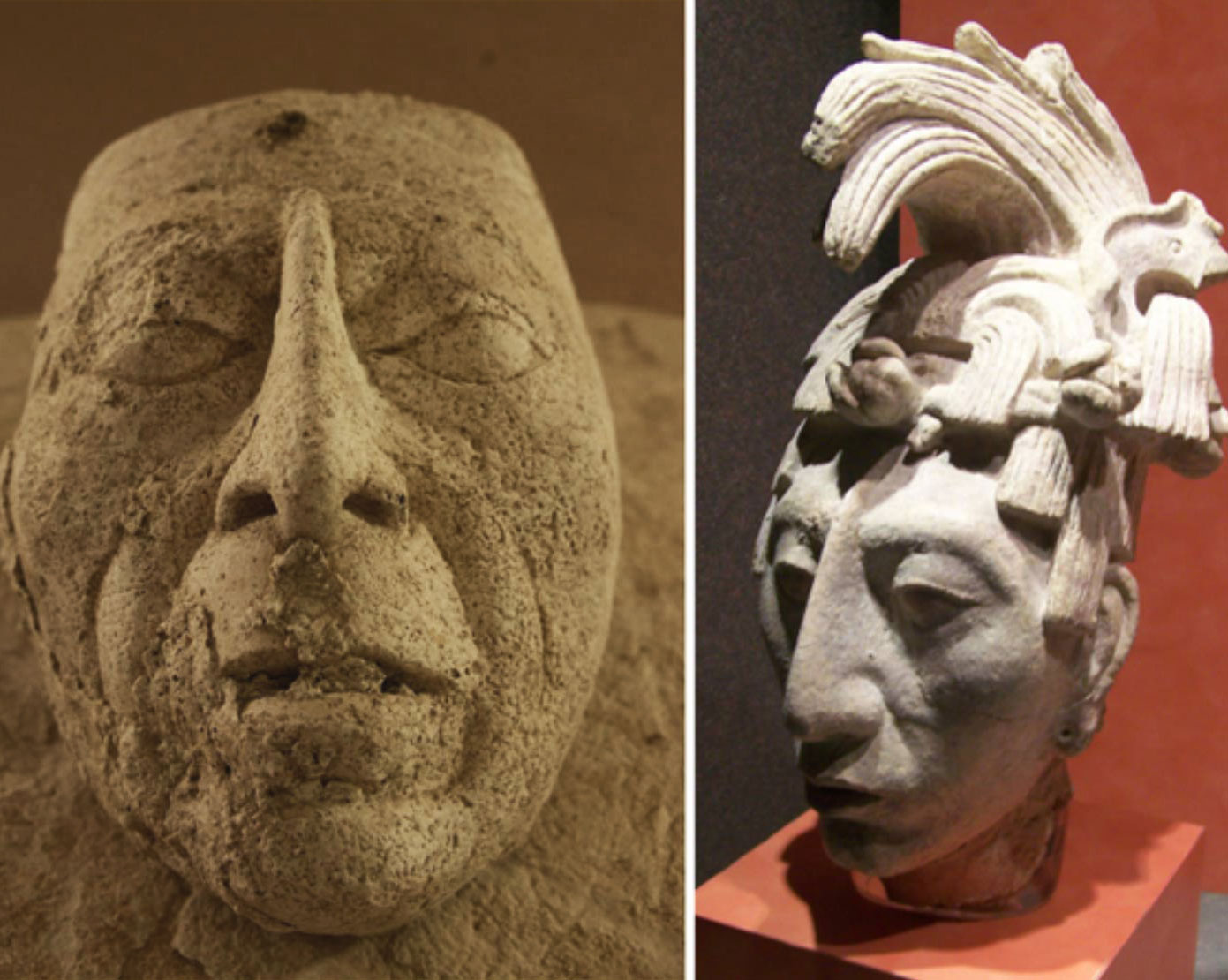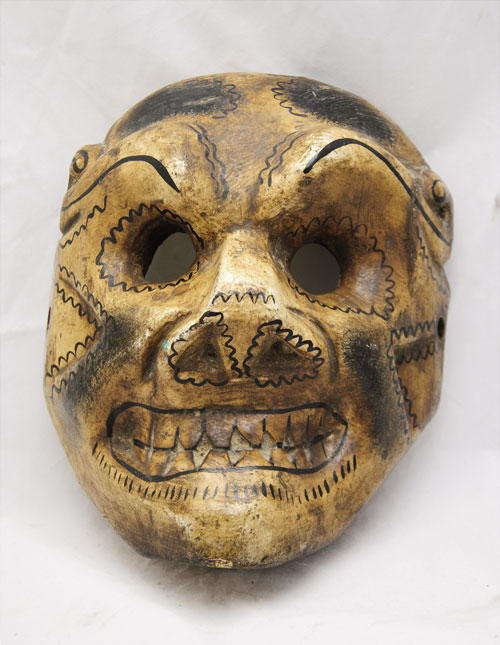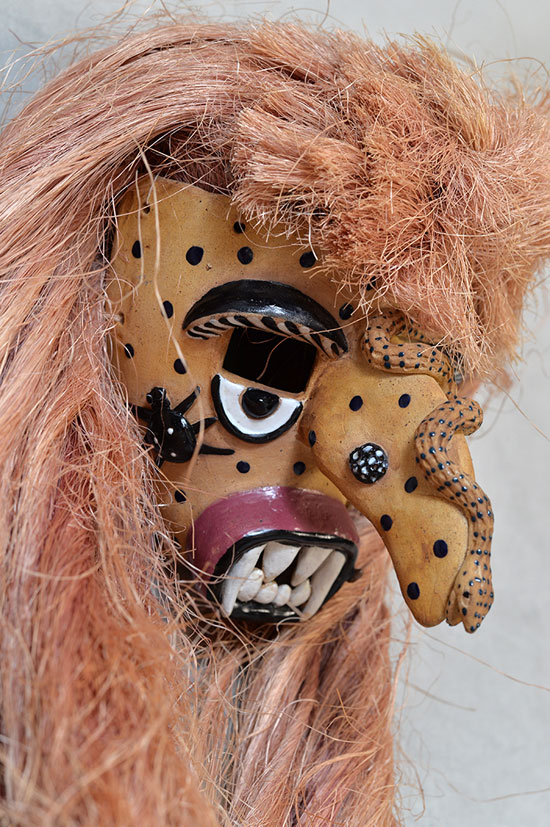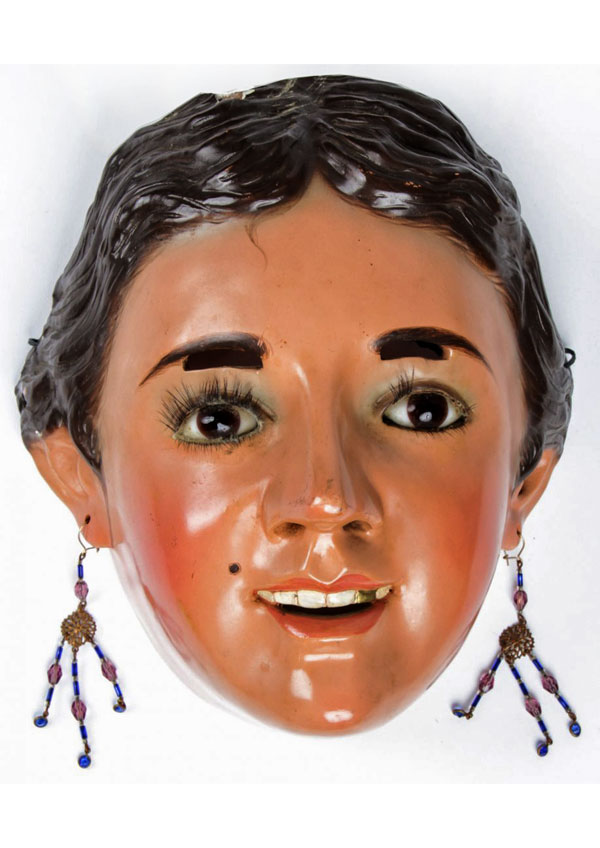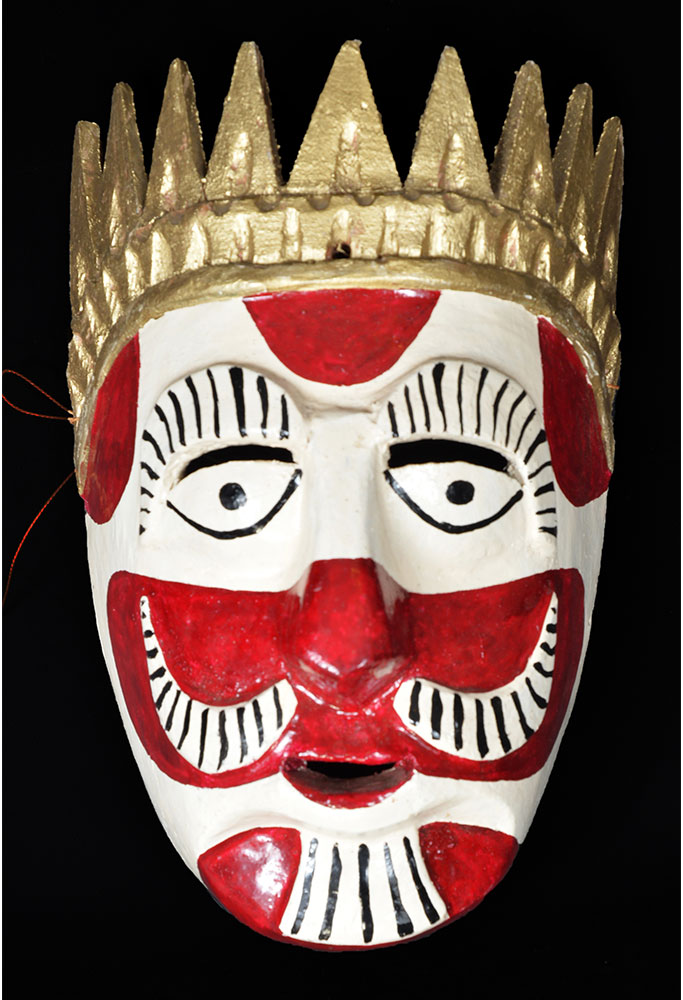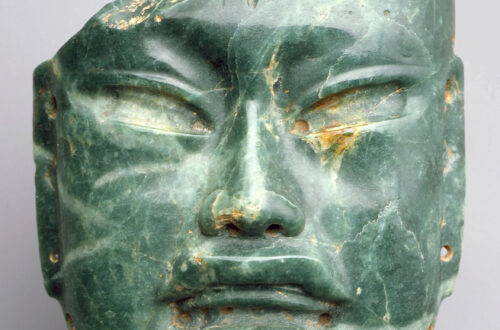Q: Found this today at a barn sale in Pennsylvania and was wondering if it’s a carnival mask? Central America? Not a collector, just couldn’t leave it behind. 8 inches high and 6 inches across. Thanks. Terence, 1032 A: It is a carnival mask from somewhere in Mexico, or maybe Guatemala. But more importantly, it is old, well used, yet still in good condition. I get a special kick out the cigarette hole which clearly has been used. I’ve also heard of booze being poured down holes like this. Mexican and Central American carnivals can get pretty rowdy. I think you have a nice cultural artifact. A Save Save
-
-
Good-looking tigre mask
Mexican mask collectors know that tigre is what they call a jaguar. Though now extinct, they were once the apex predator in that part of the world. Yellow masks with black dots and sharp teeth are featured in many different dances all around Mexico. Village carvers sell their products to local dancers as well as tourists (who are willing to pay more). The good news for collectors is that the tourists often get the prettier, more creative versions. Mexico is indeed a very artistic culture. Save Save
-
Storing masks can be fun
Q: I just have a quick question about mask storage. I have a small collection of African and Indonesian masks and was wondering about the best way to store them for long term preservation. Do you have any suggestions? Hang them? Put them in boxes? I’d appreciate your feedback. Annabelle, 1027 A: My choice would be to hang them on the wall, especially if the air in your home is fairly well regulated. This way they are easy to inspect and occasionally dust. Best of all, you’ll love the way lots of masks hanging close together can have a decorative effect. Here’s what I did with part of my Mexican…
-
Him and her masks from Puebla
Q: My husband purchased these two Mexican masks, a male and female, online. They did not come with any information other then an old label on the back of the female mask stating Puebla. They seem to be quite old, worn thru in one area on a cheek, and with old repairs to splits. Can you help with information? Kim, 1026 A: This is an unusual pair… both the blue color and underneath-the-eye sight holes are uncommon. But they were made by the same carver somewhere in the Sierra de Puebla Mountains. Definitely old and used. Personally, I love the way they look together. You should purchase a book…
-
Another wonderful mask from Candelario
Q: And here is a photo of the newer masks he was making at the time (90’s) with his sons. I probably have some more in a box somewhere… Hope they are of use. Chris, 1018 A: Please check out blog #898 which was posted Jan 23, 2016. You can recognize the style and creativity of Don Herminio Candelario from Suchitlan, Colima. His masks are usually made for the local dancers, and though they represent different characters including many animals, they are always colorfully different from the masks made by other carvers. Like any great artist, Don Herminio has his own style. This much artistic freedom is rarely on display…
-
Another great decorative
Q: I’m trying to determine the age of this (Mexican?) mask. The external patina does not look incredibly old but the inside looks like it has had heavy use. It is very large at 34″ long and entirely carved out of a light and soft wood. The eyes are glass. To me this looks similar to glass eye masks said to be from the 1940s but I have not been able to find a similar figure from that period. Any help or suggestions would be appreciated! I have a few antique masks on display but not enough to call it a collection. I am interested in masks that are unusual…
-
New Tarahumara mask
Q: I have been hesitating about whether to buy these masks that are purportedly from the Tarahumaras. I have never seen anything like them before. They are 12-15 inches high. What do you think? Christophe, 1006 A: They are from the Tarahumara who live in the remote Copper Canyons of southwestern part of the state of Chihuahua in northwestern Mexico. These isolated Indians are the fastest long-distance runners in the world. The masks are new, but traditional in style. You can see one that is older and has a little color on page 115 of our book, Masks of the World, by Ibold & Yohn. B Save Save
-
Attack of the powderpost beetles
You can see this same mask (before the beetles struck) on page 130 of the new book, Masks of the World, by Ibold and Yohn. It is a deer mask from Oaxaca, Mexico. This style of mask has been danced by villagers for well over a hundred years. This one is 13 inches high and made of wood, deer skin and horns. It was collected in the 1960’s. Recently after being stored in my basement, I noticed that the dreaded beetles had been doing their nasty work on this beautiful mask! The nose area was the most damaged. So after the beetles were killed I was forced to do some…
-
Old Mexican mask?
Q: I recently purchased a very unusual mask. It is extremely worn and aged and doesn’t look like anything I can find on the internet. I got it at an auction. There was no info. I am just trying to find out information about it, but if I find out that it is valuable I would consider selling it. Edgar, 997 A: The mask appears to be a very old artifact that would look great on the wall. Possibly it is from Mexico, but there is not enough detail to be sure. Maybe it is old, but wood masks can deteriorate a lot in one year if left outside. Concerning…
-
The wild and crazy Tastoanes
Q: The tastoanes masks are made by a pretty well-known guy in Tonalá, but they are made out of fired clay rather than leather. The first one (2a) is leather, but the second (3c) is ceramic. Enjoy! Aaron, 990 A: Look at the detail on this beautifully made ceramic mask. It is indeed a work of art. You can see two others from Santa Cruz de las Huerta, also in the state of Jalisco, by going to page 116 in the book Masks of the World. Typically these scary dance masks are made of strong leather that is coated with plaster and then painted. The colors are usually brighter than…

